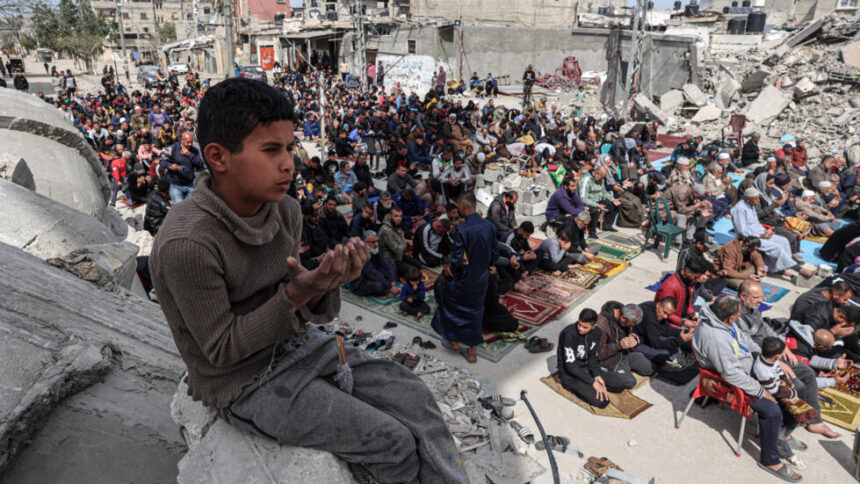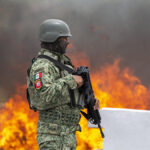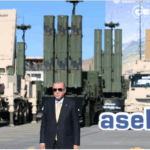The Two Biggest Global Trends Are at War
In the unlikely event that Donald Trump, Kamala Harris, or other aspiring world leaders ask for my advice on foreign policy, there’s plenty I’d be happy to talk to them about. There’s climate change, how to deal with China, why protectionism is stupid, what to do about Gaza, the role of norms, what balance of threat theory really means, and a host of other topics. But I might start by calling their attention to two competing trends in world politics, whose roots go back decades if not centuries. These two trends are at odds with each other in important ways, and failure to appreciate how they interact has led plenty of countries astray.
In the unlikely event that Donald Trump, Kamala Harris, or other aspiring world leaders ask for my advice on foreign policy, there’s plenty I’d be happy to talk to them about. There’s climate change, how to deal with China, why protectionism is stupid, what to do about Gaza, the role of norms, what balance of threat theory really means, and a host of other topics. But I might start by calling their attention to two competing trends in world politics, whose roots go back decades if not centuries. These two trends are at odds with each other in important ways, and failure to appreciate how they interact has led plenty of countries astray.
The first trend is the increasing range, accuracy, and lethality of modern weaponry. A century or so ago, airpower was in its infancy, and rockets and artillery were inaccurate and had limited range. Doing much damage to an enemy required defeating its military forces and then surrounding its cities with a besieging army. Today, however, powerful states have become quite adept at blowing things up, even if the target is hundreds if not thousands of miles away. Nuclear weapons and intercontinental-range missiles are the apotheosis of this trend, but thankfully these weapons have been used solely for deterrence since 1945. But steady improvements in long-range aircraft, ballistic and cruise missiles, drones, and technologies of precision guidance now allow combatants to destroy targets hundreds of miles away. Even some nonstate actors (e.g., the Houthis in Yemen) are getting into the act.
With command of the air, powerful states can now wreak enormous damage on opposing armies or on helpless civilian populations. What the United States did at the beginning of the first Gulf War, what Russia is doing in Ukraine, or what Israel is now doing in Gaza shows how the ability to project destructive power has increased dramatically over time. One might add to this list the use of drones to kill suspected terrorists in so-called signature strikes or to assassinate foreign officials such as Qassem Suleimani, the head of Iran’s elite Quds Force. The Israeli attack that killed Fuad Shukr, a prominent Hezbollah official, in Lebanon last week is just the latest example. For the world’s strongest states, the ability to reach out with lethal force has never been greater. And sophisticated cyberweapons may enable states to attack an opponent’s critical infrastructure with the click of a mouse, even if the target is on the other side of the world. For some states, in short, the ability to destroy has become global in scope.
The second trend is wholly different: the deepening political salience and tenacity of local forms of identity and loyalty and especially the sense of being a nation. As I’ve noted before, the “idea that humans form distinct tribes based on a common language, culture, ethnicity, and self-awareness, and that such groups ought to be able to govern themselves, has shaped the history of the past 500 years in ways that many people still do not fully appreciate.” The widespread emergence of a sense of nationhood and the belief that such groups should not be ruled by others is one of the main reasons why the multinational Hapsburg and Ottoman empires did not endure past 1918 and 1922 respectively; why the British, French, Portuguese, and Belgian colonies gained independence; and why the Soviet Union and Warsaw Pact eventually came unglued, too.
Once a powerful sense of national identity takes root within a population—a process that governments often encourage to forge a greater sense of unity and allegiance to the state—its members will be increasingly willing to make enormous sacrifices for the sake of the “imagined community.” The North Vietnamese fought the Japanese, the French, and the Americans for 50 years to gain independence and unify their nation. The Afghan mujahideen eventually forced the Soviet Union to withdraw its troops from their country, and their Taliban successors convinced the United States to do the same thing. Today, outnumbered and outgunned Ukrainians continue to resist Russia’s invasion, while Israel’s efforts to destroy Palestinian resistance and identity seem only to make them stronger.
The result is something of a paradox: Powerful, technologically advanced countries have increasingly effective means of inflicting damage on others at a distance, yet this destructive capacity doesn’t bring them lasting political influence or produce meaningful strategic victories. The United States controlled the skies over Iraq from 1992 to 2010, and it could bring planes, missiles, and drones to bear against its opponents there whenever it wished. But that technically impressive capacity didn’t enable U.S. forces to eliminate the insurgents, reduce the influence of pro-Iranian militias, or determine the political evolution of the country.
These two trends—the ever-increasing capacity to blow things up at a distance and the stubborn power of local identities—are at odds in part because using the former tends to reinforce the latter. Early airpower theorists predicted that aerial bombardment would shatter civilian morale and lead opponents to surrender quickly, but experience shows that dropping bombs on a civilian population is more likely to foster a powerful sense of unity and spirit of resistance. Inflicting death and destruction on defenseless populations is, in fact, an ideal crucible in which to forge a sense of shared identity among the victims. Destroying Ukrainian infrastructure with bombs and missiles may be of some military value, but Russian President Vladimir Putin couldn’t have picked a worse way to persuade Ukrainians of their “historical unity” with Russia. No matter how the war ultimately ends, he has created a rift between Ukraine and Russia that is likely to last for decades.
Why do I want to tell aspiring national leaders about these two trends? Because the leaders of powerful countries are prone to think that the “shock and awe” capacity to blow stuff up will enable them to dictate to weaker populations. It’s a seductive thought because dropping bombs or firing missiles and drones at weaker adversaries minimizes the risks to one’s own citizens. As historian Samuel Moyn has argued, leaders can even convince themselves that accuracy and precision will enable them to take out the bad guys and spare civilians, thereby making the use of lethal force seem benign and easier to approve. If you’re a powerful country dealing with some pesky foreign-policy problem and you can throw some airpower at the problem without much risk to your own people, then “doing something” becomes a whole lot more attractive.
Unfortunately, blowing things up (and sometimes killing lots of innocent people, too) doesn’t address the underlying political problems that produced the conflict in the first place. Just look at the vast carnage that Israel has inflicted on Gaza over the past 10 months. Nobody can question the destructive power that Israel has demonstrated—all you need to do is look at videos of Gaza today—but does anyone seriously believe this will cause millions of Palestinians in Gaza, the West Bank, or elsewhere to abandon their desire to govern themselves? The same is true in reverse, of course—Hezbollah has a greater capacity to strike Israel than it did 20 years ago, but that capacity for destruction won’t allow it to dictate terms or solve the deeper political issues that are driving the conflict with Israel and risking a wider regional war.
I’m not saying that modern airpower is of no value or that the world would be better off if states had to rely on carpet-bombing and cruder forms of long-range attack. When combined with competent ground forces, airpower can be extremely effective in advancing well-chosen political objectives. U.S. airpower played an important role in helping to rout the Islamic State from its short-lived caliphate, for example—but only because Iraqi and Iranian ground forces were there to retake and pacify the area.
Military theorist Carl von Clausewitz was right: War is the continuation of politics, and destructive capacity alone is rarely enough to achieve one’s political aims. Success depends first and foremost on choosing realistic objectives but also on a willingness to address underlying political causes and to recognize each nation’s desire to govern itself. Anyone who thinks they can bomb their way to victory has no business running a country, and we’d all be better off if more aspiring leaders understood that.
By Stephen M. Walt
Source: Foreign Policy







